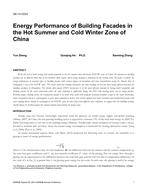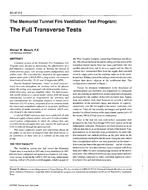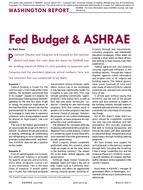In 2003, ASHRAE approved the nation’s first residential ventilation standard, ANSI/ASHRAE Standard 62.2-2004, Ventilation and Acceptable Indoor Air Quality in Low-Rise Residential Buildings. Because meeting this standard can significantly change the ventilation rate in residences, there is concern about how these changes may impact humidity. This paper examines the effects of Standard 62.2 levels of ventilation on humidity in typical newly constructed residences (whose thermal envelopes conform to the International Energy Conservation Code). Four different systems were simulated in six climates of varying outdoor humidity characteristics in Charlotte, Houston, Kansas City, Seattle, Minneapolis, and Phoenix. In order to capture moisturerelated HVAC system operation, such as the lack of dehumidification from typical air-conditioning systems at the beginning of each cycle, we developed a simulation tool that operates on a minute-by-minute basis and utilizes a dynamic model of air conditioner performance. The simulations also include the effects of internal generation. Dehumidification typical of most houses is provided by the operation of cooling equipment that is controlled by temperature rather than humidity. The results show that although Standard 62.2-compliant ventilation systems increase average indoor humidity in hot, humid climates, the number of high humidity events is unchanged. In less humid climates, Standard 62.2-compliant ventilation systems do not significantly affect indoor humidity. Other factors, such as occupant density, climate, and air-conditioner operation, are more significant factors in determining indoor humidity.
Presented at Thermal Performance of Exterior Envelopes of Whole Buildings X – December 2007
Units: Dual
Citation: Thermal Performance of Exterior Envelopes of Whole Buildings X
Product Details
- Published:
- 2008
- Number of Pages:
- 14
- File Size:
- 1 file , 2.3 MB
- Product Code(s):
- D-BldgsX197


